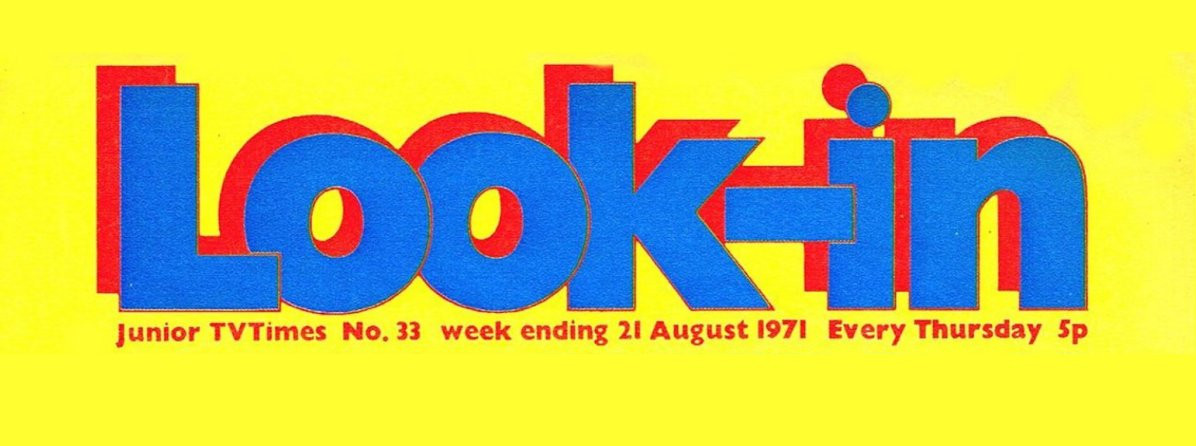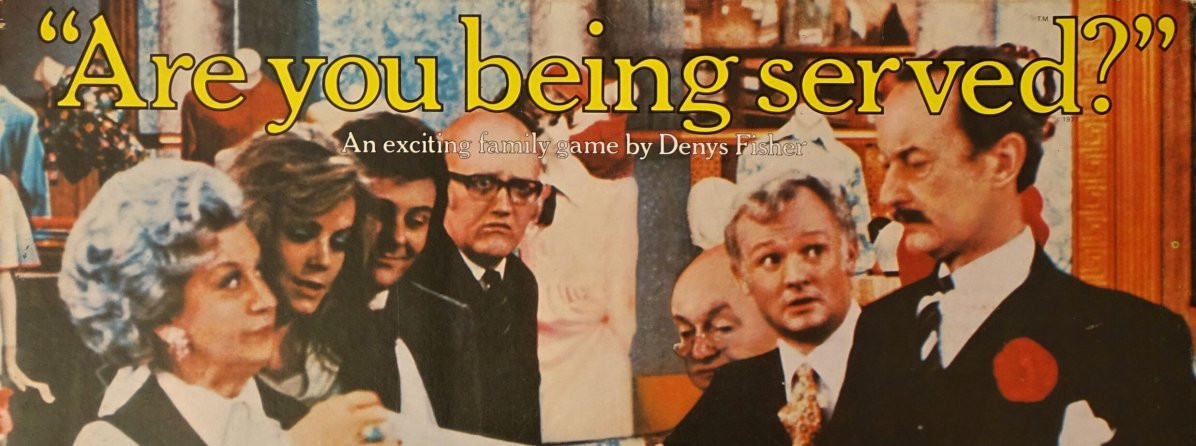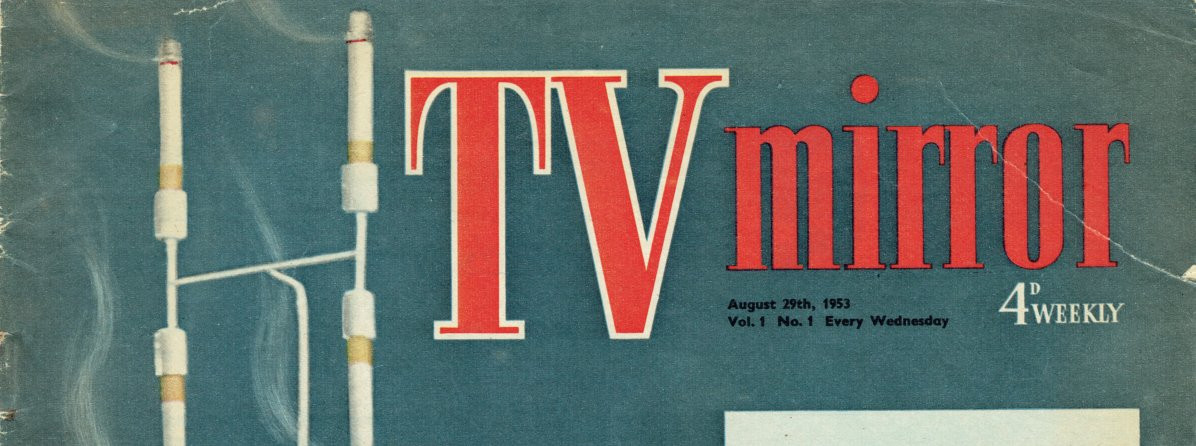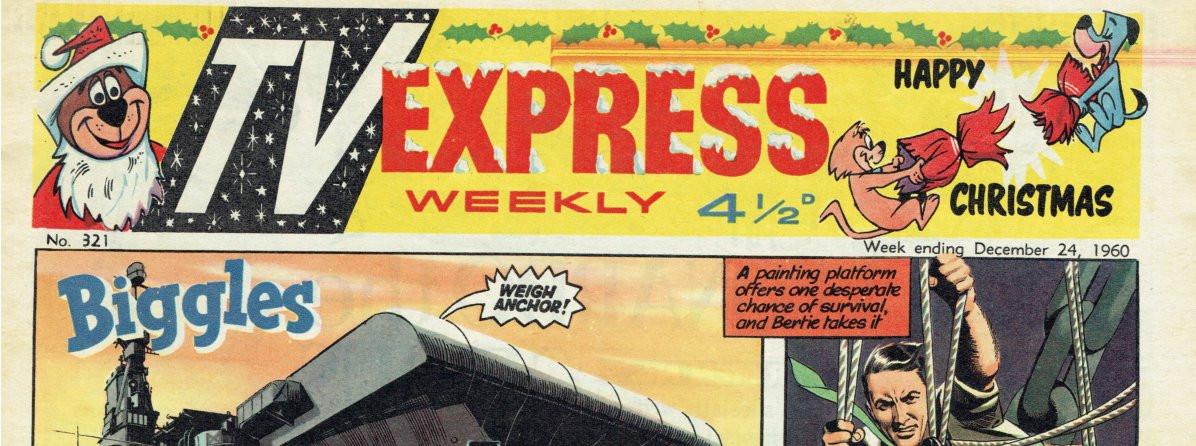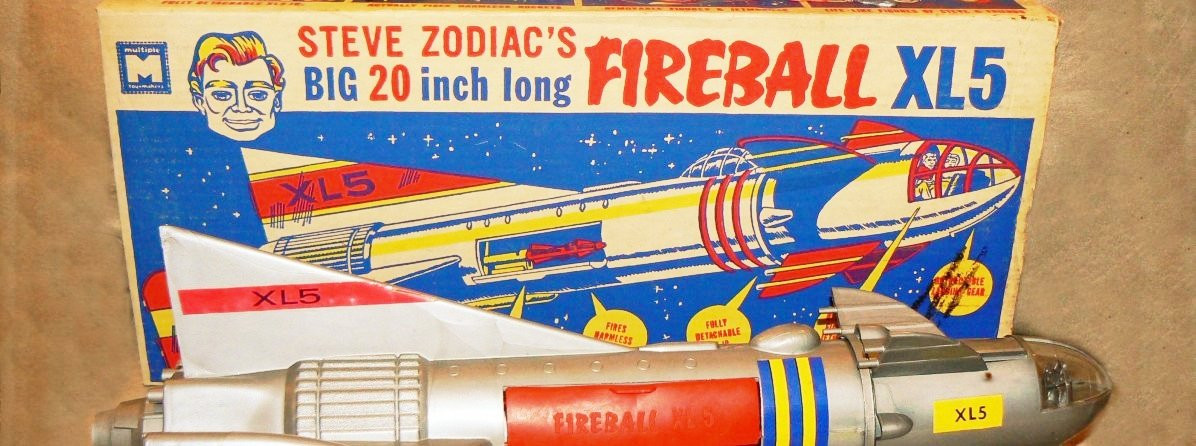
Looking-back at Look-in
Brian Slade remembers the golden era of television comic strips and programme features for youngsters
In the days before the internet and satellite television, it was hard work to be a teenager trying to follow your favourite television stars. Your chosen show would appear, you watched it at the advertised time (or missed it until a repeat, within the year if you were lucky), and then that was that – no fan sites, no Youtube reviews…the best you could hope for of your teen idols was the occasional appearance on Noel Edmonds’ Multi-coloured Swap Shop, taking a few phone calls and plucking competition postcards sent in to good old London W12 8QT. But one iconic magazine kept a teenager’s thirst for celebrities going – Look-in.
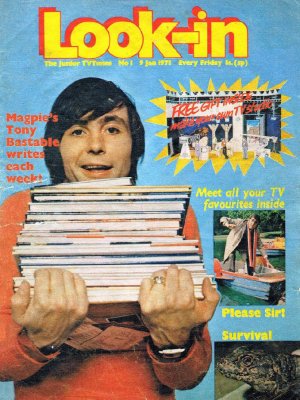
Look-in first arrived on shelves in early 1971, with its sub-heading of ‘Junior TV Times.’ And in a way, it was. Its parent magazine was about television schedules, but also offered insight into the shows it had on offer and interviews with its stars. And of course, these were the days when ITV and BBC jostled for viewing figures as the only two players on the field, so listings magazines didn’t detail what ‘the other’ had to offer.
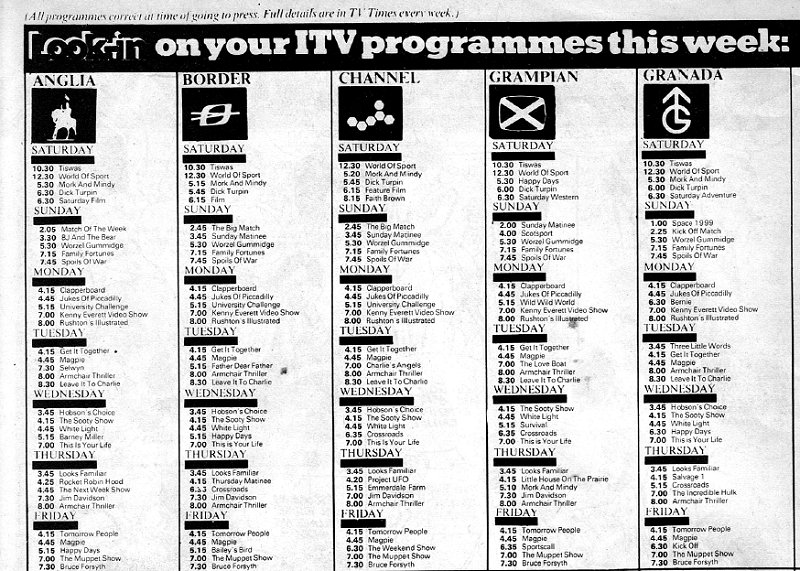
The creators behind Look-in nailed it as far as understanding their audience dynamic. They knew what kids were interested in – fun, adventure, cars, comics – and they made sure they had all bases covered. They carried the commercial television schedules, but so much more. At the core was comic strips. For those who wanted their fix of comic action, early editions carried a number of comic strips based on shows running on the commercial network at the time. There was Crowther in Trouble, showing the misadventures of comedian Leslie Crowther, to be seen in his own sketch show at the time The Leslie Crowther Show, along with a strip on the high jinks of the gang from school-based sitcom Please Sir! There were also strips on Freewheelers, a younger variation of action-spy dramas, and Timeslip, ITV’s attempt to have time-travelling adventures of their own.
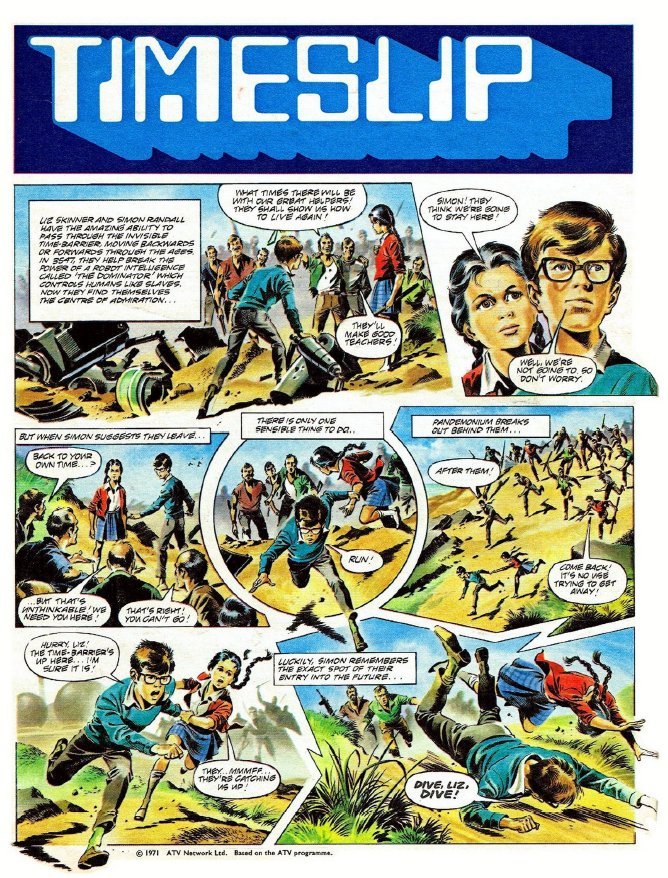
Not long after Look-in’s debut, their covers famously changed. Each week had previously shown photos of movies, shows or stars contained within their features, but in the autumn of 1971, they replaced the photos with artwork by artist Arnaldo Putzu. His talents at cinema posters of the previous decades were put to perfect use as he painted cover artwork normally showing a caricature of some of the most famous stars of the time, or a more serious combination of profile shots alongside simulated actions stills. Putzu’s artwork became almost as iconic as the magazine itself.
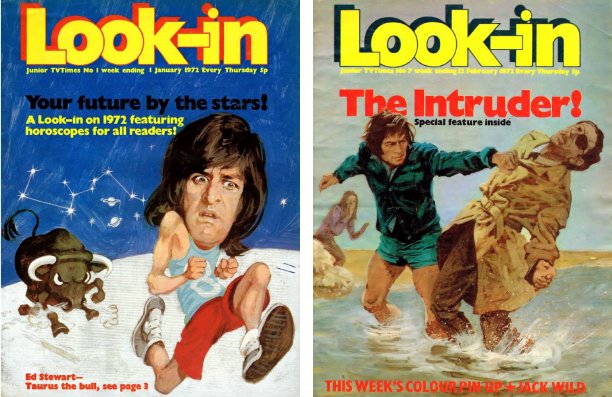
Although billed as a television guide for the younger generation, movies and television didn’t get exclusive use of the pages. Music and sport were there too, though always with a slant towards ITV programming, thereby granting pages for the likes of Brian Moore and Iain St John for On the Ball features. And of course, while ITV couldn’t compete on screen with Top of the Pops, they could appeal to the youngsters with two-page poster pull-outs of their favourite music stars of the day.
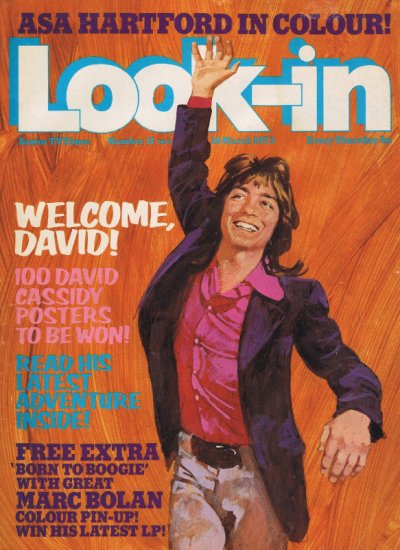
Sprinkle in some obligatory educational elements, along with competitions to win anything from vinyl albums to portable televisions and the kids of the magazine’s golden years were well catered for. And of course, the magazine didn’t stand still. The comic strips changed with the programme schedules, so on-screen successes such as On The Buses, Bless This House, Benny Hill and Mind Your Language got their moments of glory in cartoon format – unthinkable now given the modern take on some of the shows’ contents!
Look-in did its best to stay current. Racier American shows began to dominate the pages as the 1980s arrived and they got the same comic strip treatment. Their arrival however, coincided with the end of the artistry of the front covers, replaced by bog-standard publicity photos of bands and programmes. The gentle innocence of painted Muppets was replaced by action stills from the likes of Knight Rider, The Fall Guy and The A-Team.
Perhaps inevitably, Look-in was doomed to fall by the wayside. In reality, it was competing on too many fronts. Trying to keep cartoon strip fans happy meant competing with established British comics like Beano and Dandy or taking on the might of imported Marvel and DC publications. Who wants comic strips of Bros and Bucks Fizz when Batman is battling in the shadows with the Joker?
Meanwhile, edgier magazines devoted entirely to music or sport, like Smash Hits and Shoot were too much competition, and with television itself changing on a regular basis, Look-in checked out in 1994.
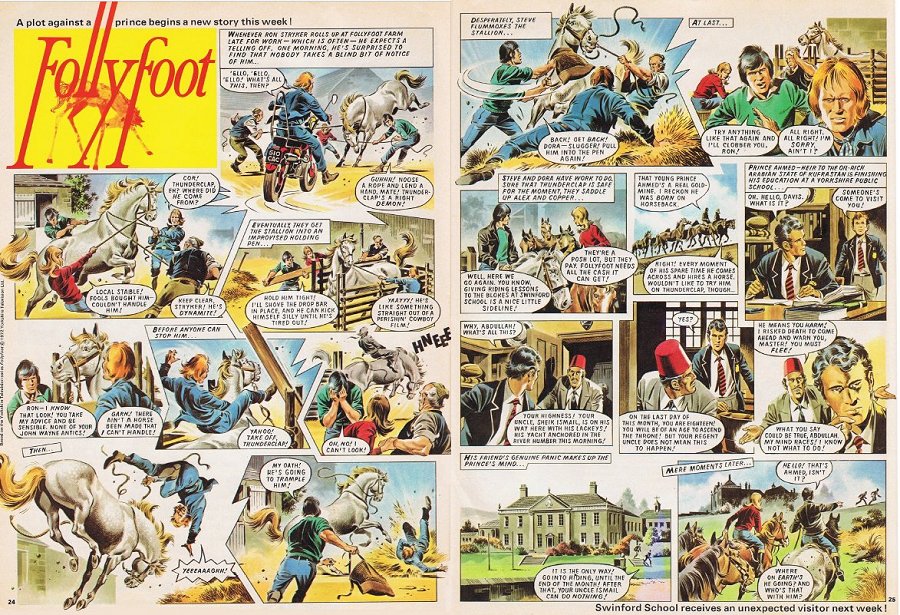
At its height, Look-in had been compulsive reading for kids, and its annuals were as much a part of kids’ Christmases as mince pies and updated copies of the Guinness Book of Records. The thirst for nostalgia for a simpler time will always remember the shows of the 1970s and 1980s, but behind them all, Look-in magazine was helping bang the ITV drum for kids and teenagers throughout many people’s entire childhoods…and that’s quite a legacy for this unforgettable publication to have left us.
